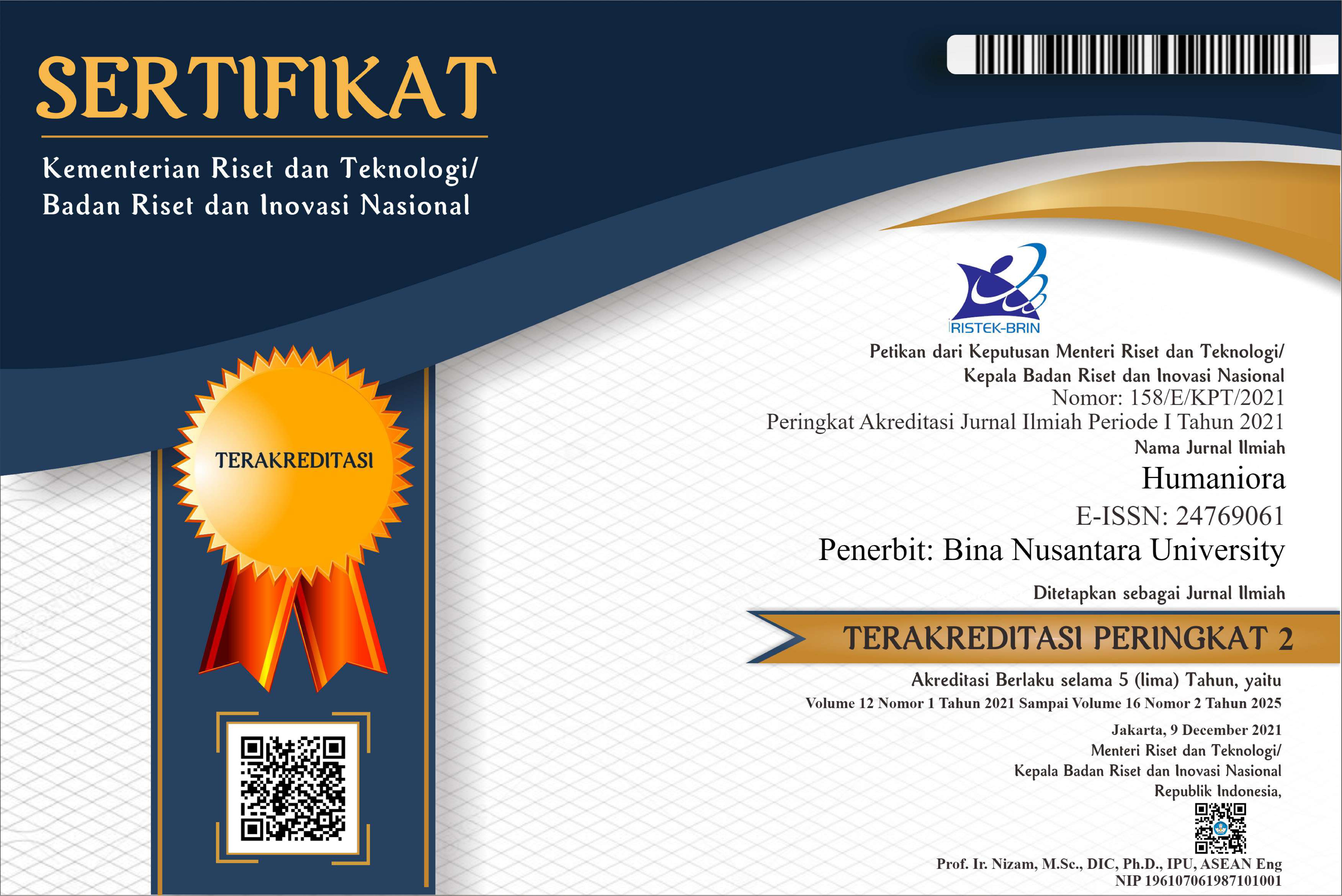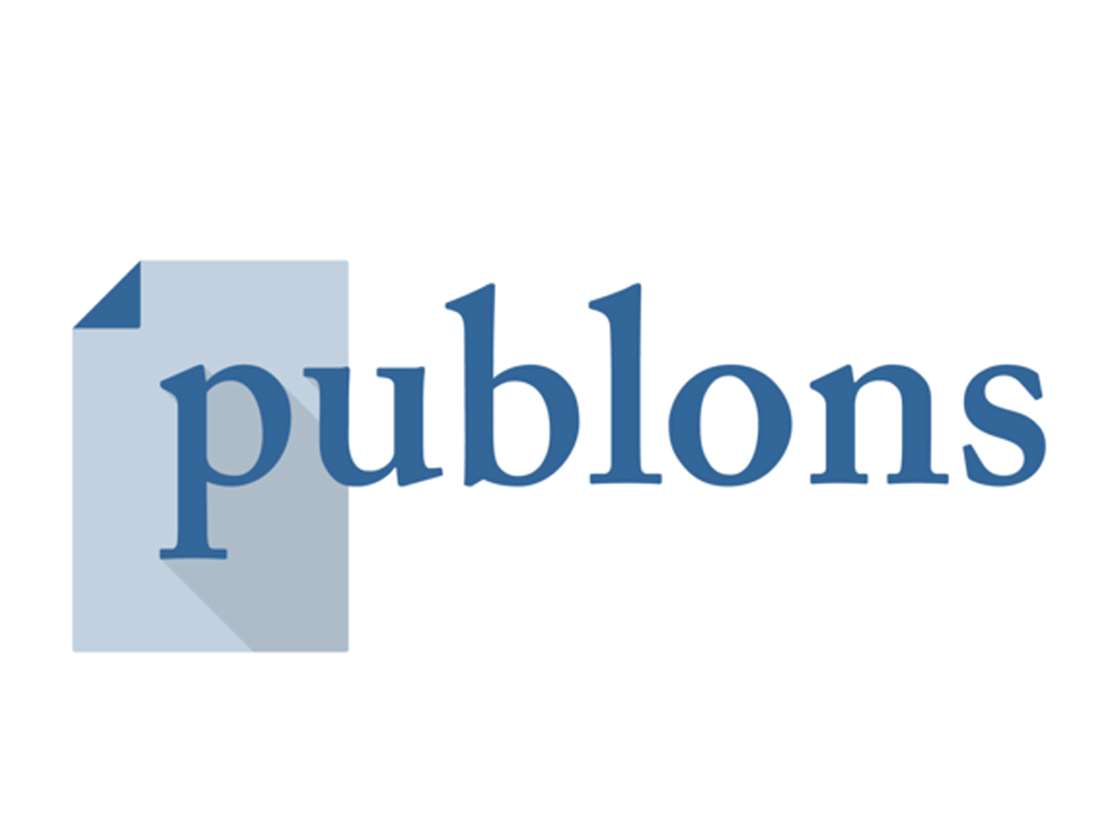Interpersonal Relation sebagai Variabel yang Menentukan Kinerja Unit atau Organisasi
DOI:
https://doi.org/10.21512/humaniora.v1i2.2896Keywords:
performance, HPT, interaction effectivenessAbstract
Every organization, require maintenance or improvement of performance for institutional sustainability. To maintain or improve performance, various kinds of business or methods developed. Various methodologies always involves a person or human element in organizations. Deepening and understanding of performance, will greatly assist the organization. When talking about performance in an organizational context, it is not sufficient if we only look at the paradigm in which individual capabilities we need to also look at the paradigm of interactions between individuals. To this we can turn to the model developed from HPT. From the discussion we propose a model that combines these two things, namely, the performance of (K) = individual resources (SDI) + interaction effectiveness (EI).
Plum Analytics
References
Blumberg, M., & Pringle, C. (1982). The Missing Opportunity in Organizational Research. Academy of Management Review, 7, 360-369.
Borman, W. C., & Motowidlo, S. J. (1997). Task performance and contextual performance: The meaning for personnel selection research. Human Performance. 10, 99-109.
Campbell, J. P. (1990). Modelling the performance prediction problem in industrial and organizational psychology. In M. D. Dunnette & L. M. Hough (Eds.), Handbook of industrial and organizational psychology. (Vol. 1, pp. 687 – 732). Palo Alto: Consulting Psychologist Press.
Campbell, J. P., McCloy, R. A., Oppler, S. H., & Sager, C. E. (1993). A theory of performance. In E. Schmitt, W.C. Borman, & Associates (Eds.), Personnel selection in organizations (pp. 35 – 70). San Fransisco: Jossey – Bass.
Cherniss, C., & Adler, M. (2000). Promoting Emotional Intelligence in Organization. Alexandria, ASID.
Circcarelli, S. K., & Meyer, G. E. (2006). Psychology. New Jersey: Pearson Education, Inc.
Daft, R. L. (2004). Organization Theory and Design. USA: Thomson South – Western.
Drucker, P. E. (2007). People and Performance, the best of Peter Drucker on Management. Boston: Harvard Bussiness School Press.
De Wall, A. A. (2001). Power of Performance Management. Canada: John Wiley & Sons, Inc.
Ericsson, K. A., & Lehmann, A. C. (1996). Expert and exceptional performance: Evidence on maximal adaptations on task constraints. Annual Review of Psychology, 47. 273-305.
Gardner, H. (1983). Frames of Mind: The Theory of Multiple Intelligence. New York: Basic Book.
Gilbert, T. F. (1978). Human Competence: Engineering Worthy Performance. New York: McGraw Hill.
Goleman, D. (1995). Emotional Intelligence. New York: Bantam.
Goleman, D. (1998). Working with Emotional Intelligence. New York: Bantam.
Goleman, D. (2001). Emotional Intelligence: Issues in Paradigm Building. In C. Cherniss & D. Goleman (Eds.), The Emotionally Intelligent Workplace (pp. 13-26). San Francisco, CA: Jossey-Bass.
Goleman, D. (2006). Social Intelligence. New York: Bantam.
Greenberg, J., & Baron R. A. (2008). Behavior in Organization. New Jersey: Pearson Education, Inc.
Hackman, J. R., & Oldham, G. R. (1976). Motivation through the design of work: Test of a theory. Organizational Behavior and human performance, 16, 250 – 279.
Harless, J (1988). Accomplishment-Based Curriculum Development. Newnan, GA: Harless Performance Guild.
Handley, R. & Bar-On, R. (1998). "Military Recruiting: The Department of Defense Could Improve Its Recruiter Selection and Incentive Systems" Submitted to Congress January 30, 1998.
Hunter, J. E., Schmidt, F. L., & Judiesch, M. K. (1990). Individual Differences in Output Variability as a Function of Job Complexity. Journal of Applied Psychology, 75, 28-42.
Herzberg, F., Mausner, B., & Snyderman, B. B. (1959). The Motivation to Work (2nd ed.). New York: John Wiley & Sons.
Ilgen, D. R., & Schneider, J. (1991). Performance measurement: A multy-discipline view. In C. L. Cooper, & I. T. Robertson (Eds.), International review of industrial and organizational psychology (Vol. 6, pp. 71 – 108). Chichester: Wiley.
Jones, G. R. (2004). Organizational Theory, Design, and Change. New Jersey: Pearson Education.
Jones, M. D. (2006). Which is a Better Predictor of Job Performance: Job Satisfaction or Life Satisfaction. Institute of Behavioral and Applied Management, 20 – 42.
Kanter, R. M. (1997). Frontiers of Management. Boston: Harvard Business School Press.
Kraut, A. (Eds). (2006). Getting action from organizational surveys-new concepts, technologies and application. San Fransisco: John Wiley & Son.
Lahey, B. B. (2007). Psychology: an Introduction. New York: McGraw Hill.
Langdon, D. (1991). Performance technology in three paradigms. Performance and Instruction Journal, 30(7), 1-7.
Latham, G. P., Locke, E. A., & Fassina, N. E. (2002). The high performance cycle: Standing the test of time. In S. Sonnentag (Ed.), Psychological management of individual performance (pp. 201–228). Chichester, England: Wiley.
Lawler, E. E. I. (2000). Rewarding Excellence: Pay Strategies for the New Economy. San Fransisco, CA: Jossey Bass.
Locke, E. A., & Latham, G. P. (1990a). A theory of goal setting and task performance. Englewood Cliffs, NJ: Prentice-Hall.
McNamara, C. (2008). Basic guide to outcomes-based evaluation for non-profit organizations with very limited resources. Free Management Library. Diunduh dari http://www.managementhelp.org/evaluatn/outcomes.htm
Motowidlo, S. J., & Schmit, M. (1999). Performance Assessment in unique jobs. In D. R. Ilgen & E. D. Pulakos (Eds.), The Changing Nature of Job Performance. San Fransisco, CA: Jossey Bass.
Neal, A., & Griffin, M.A. (1999). Developing a Theory of Performance for human resource management. Asia Pacific Journal of Human Resources, 37, 44 – 60.
Passer, M. W., & Smith, R. E. (2004). Psychology: The Science of Mind and Behavior. New York: McGraw Hill.
Pershing, J. A. (2006). Handbook of Human Performance Technology. San Fransisco: Pfeiffer.
Robbins, S. P., & Judge, T. A. (2007). Organizational Behavior. New Jersey: Pearson Education.
Roe, R. A. (1999). Work Performance: A Multiple regulation perspective. In C. L. Cooper & I. T. Robertson (Eds.), International Review of Industrial and Organizational Psychology, 14, 231 – 335.
Roethlisbager, F. J. (1941). Management and Morale. Cambridge: Harvard University Press.
Rothwell, W. J. (1996). Beyond training and development: State-of-the-art strategies for enhancing human performance. New York: American Management Association.
Salovey, P., & Mayer J. P. (1990). Emotional intelligence, Imagination, Cognition, and Personality, 9. 185-211.
Schultz, D., & Schultz, S. E. (2006). Psychology & Work Today. Boston: Pearson.
Sonnentag, S. (2000). Expertise at work: Experience and Excellent Performance. In C. L. Cooper & I. T. Robertson (Eds.), International Review of Industrial and Organizational Psychology, 223 – 264. Chichester: Wiley.
Sonnentag, S., & Frese, M. (2002). Performance Concept and Performance Theory in Psychological Management of Individual Performance. UK Sussex: John Wiley & Sons.
Spencer, L. M. J., McClelland, D. C., & Kelner, S. (1997). Competency assessment methods: History and state of the art. Boston: Hay/McBer.
Stolovitch, H., & Keeps E. (1992). What is Performance Technology? In H. D. Stolovitch & E. J. Keeps (Eds.), Handbook of Human Performance Technology: A comprehensive guide for analyzing and solving performance problems in organizations. San Fransisco: Jossey–Bass/Pfeiffer.
Stolovitch, H. (1982). Performance Technology: an Introduction. Performance and Instruction, 21(3), 16-19.
Tekleab. A., Takeuchi R., & Taylor, M. S. (2005). Extending the Chain of Relationship among Organizational Justice, Social Exchange, and Employee Reactions: The Role of Contract Violations. Academy of Management Journal, 48, 1 (2005), pp. 146-157.
Thorndike, E. L. (1920). Intelligence and Its Uses. Harper, 140, 227–235.
Van Tiem, D. M., Moseley, J. L., & Dessinger, J. C. (2004). Fundamentals of Performance Technology. Washington, DC: International Society for Performance Improvement.
VandenBos, G. R. (2007). APA Dictionary of Psychology. Washington: American Psychological Association.
Veen, P. and Korver, T. (1998). “Theories of Organization”. In Drenth, P. J. D., Thierry, H. and Wolff, C. J. (eds) Handbook of Work and Organizational Psychology: Organizational Psychology. Brighton: Psychology Press, pp. 5-38.
Vroom, V. H. (1964). Work and Motivation. New York: Willey.
Weiten, W. (2008). Psychology: Themes & Variation. Balmony, CA: Thomson Wadsworth.
Wilmont, F. S., Prigmore, C., & Bray, M. (2002). HTP Models: an Overview of the Major Models in the Field. Performance Improvement, 41 (8), 14-22.
Downloads
Published
How to Cite
Issue
Section
License
Authors who publish with this journal agree to the following terms:
a. Authors retain copyright and grant the journal right of first publication with the work simultaneously licensed under a Creative Commons Attribution License - Share Alike that allows others to share the work with an acknowledgment of the work's authorship and initial publication in this journal.
b. Authors are able to enter into separate, additional contractual arrangements for the non-exclusive distribution of the journal's published version of the work (e.g., post it to an institutional repository or publish it in a book), with an acknowledgment of its initial publication in this journal.
c. Authors are permitted and encouraged to post their work online (e.g., in institutional repositories or on their website) prior to and during the submission process, as it can lead to productive exchanges, as well as earlier and greater citation of published work.
USER RIGHTS
All articles published Open Access will be immediately and permanently free for everyone to read and download. We are continuously working with our author communities to select the best choice of license options, currently being defined for this journal as follows: Creative Commons Attribution-Share Alike (CC BY-SA)
















